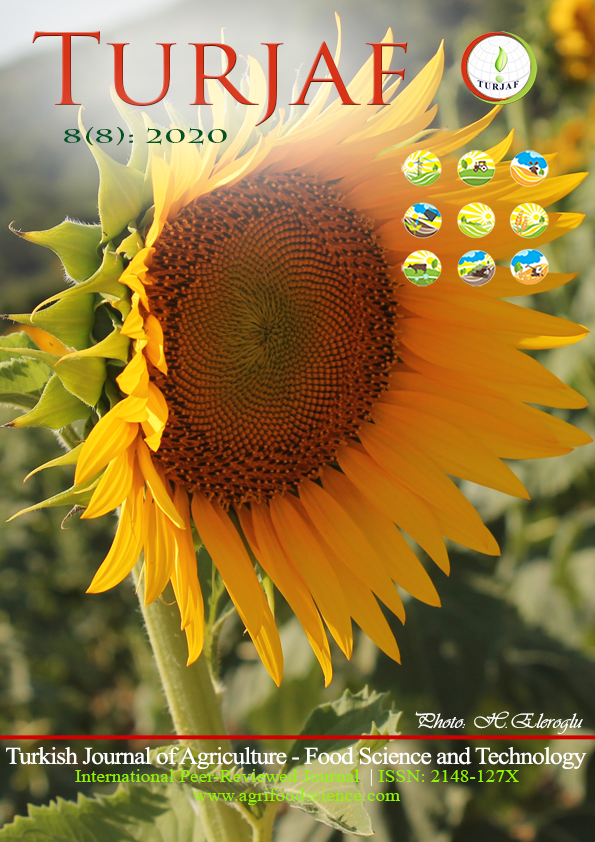An Investigation on Determination of Seed Characteristics of Some Gluten-Free Crops (Amarantus mantegazzianus, Chenopodium quinoa Willd., Eragrostis tef [Zucc] Trotter, Salvia hispanica L.)
DOI:
https://doi.org/10.24925/turjaf.v8i8.1650-1655.3394Keywords:
Amarantus mantegazzianus, Chenopodium quinoa, Salvia hispanica L., Eragrostis tef, Seed characteristicsAbstract
To meet the nutritional requirements required for human and animal nutrition due to climatic changes, research on determination of rich in nutrients and quality, products with high resistance to adverse environmental conditions and their possibilities for growing and reproduction are carried out. This research was carried out between 2018-2019. As a material, seeds belonging to the amaranth (Amarantus mantegazzianus), chia (Salvia hispanica L.), quinoa (Chenopodium quinoa) and teff (Eragrostis tef [Zucc] Trotter) plants were studied. Some characteristics of these seeds were determined such as shape, size, mean arithmetic and geometric diameter, sphericity and thousand grain weight. According to the data obtained; the highest average length (1.140 mm), width (1.080 mm) and surface area (0.930 mm2) of the seeds of the quinoa seeds compared to other seeds; the tambourine seeds had the lowest average length (0.540 mm), width (0.300 mm) and surface area (0.130 mm2) values. In terms of thousand grain weights, the seeds of the quinoa plant are the heaviest seeds with 3.3600 g; the lightest seeds were determined to belong to the tambourine seeds with 0.0028 g.Downloads
Published
30.08.2020
How to Cite
Dumanoğlu, Z., & Geren, H. (2020). An Investigation on Determination of Seed Characteristics of Some Gluten-Free Crops (Amarantus mantegazzianus, Chenopodium quinoa Willd., Eragrostis tef [Zucc] Trotter, Salvia hispanica L.). Turkish Journal of Agriculture - Food Science and Technology, 8(8), 1650–1655. https://doi.org/10.24925/turjaf.v8i8.1650-1655.3394
Issue
Section
Research Paper
License
This work is licensed under a Creative Commons Attribution-NonCommercial 4.0 International License.









